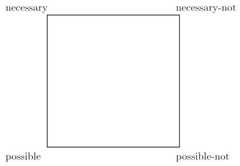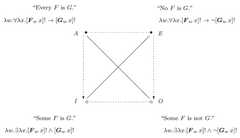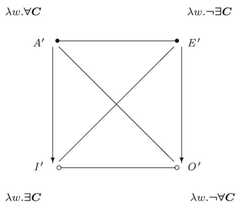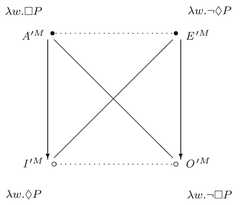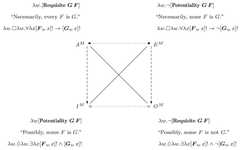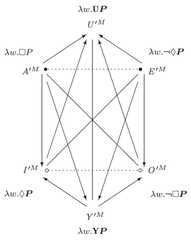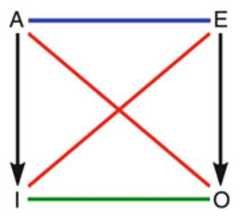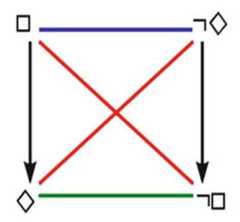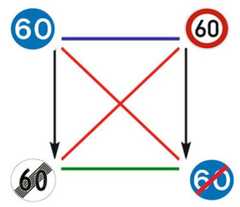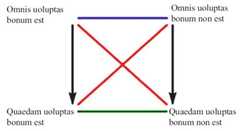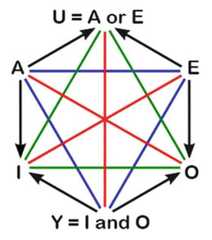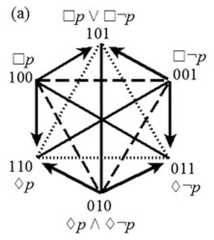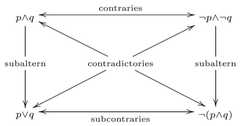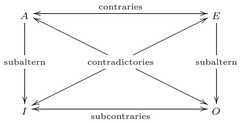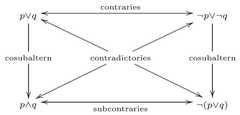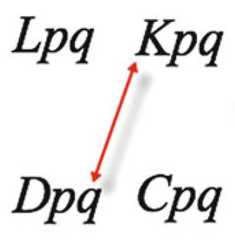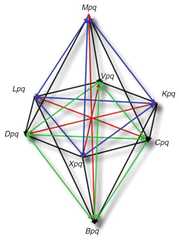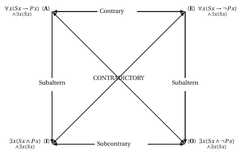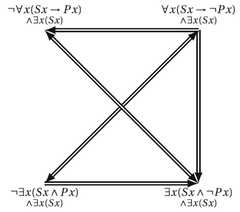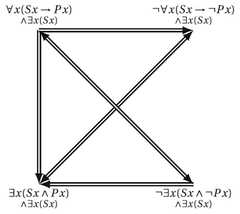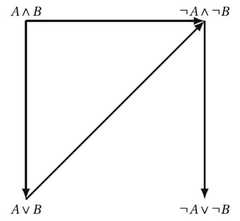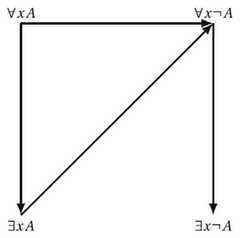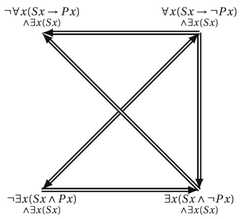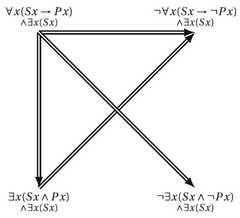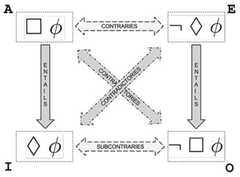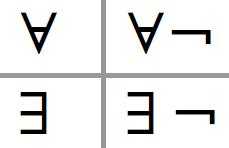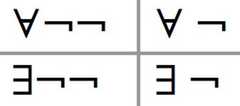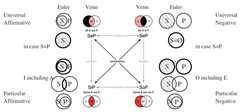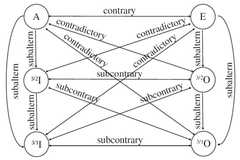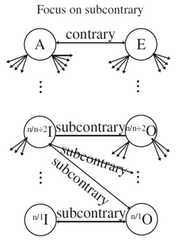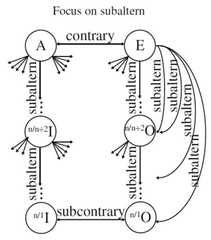The Square of Opposition: A Cornerstone of Thought (2017)
- Weingartner, Paul. 2017. “The Square of Opposition Interpreted with a Decidable Modal Logic.” (2 diagrams)
- Raclavský, Jiří. 2017. “Two Standard and Two Modal Squares of Opposition.” (5 diagrams)
- Beziau, Jean-Yves. 2017. “There Is No Cube of Opposition.” (8 diagrams)
- Smessaert, Hans, and Lorenz Demey. 2017. “The Unreasonable Effectiveness of Bitstrings in Logical Geometry.” (3 diagrams)
- Schang, Fabien. 2017. “An Arithmetization of Logical Oppositions.” (7 diagrams)
- Carnielli, Walter. 2017. “Groups, Not Squares: Exorcizing a Fetish.” (8 diagrams)
- García-Cruz, José David. 2017. “From the Square to Octahedra.” (23 diagrams)
- Cavaliere, Ferdinando. 2017. “Iconic and Dynamic Models to Represent ‘Distinctive’ Predicates: The Octagonal Prism and the Complex Tetrahedron of Opposition.” (14 diagrams)
- Vidal-Rosset, Joseph. 2017. “The Exact Intuitionistic Meaning of the Square of Opposition.” (7 diagrams)
- Benzmüller, Christoph, and Bruno Woltzenlogel Paleo. 2017. “The Ontological Modal Collapse as a Collapse of the Square of Opposition.” (1 diagram)
- Lokhorst, Gert-Jan C. 2017. “Fuzzy Eubouliatic Logic: A Fuzzy Version of Anderson’s Logic of Prudence.” (6 diagrams)
- Fink, Sascha Benjamin. 2017. “Why Care beyond the Square? Classical and Extended Shapes of Oppositions in Their Application to ‘Introspective Disputes.’” (2 diagrams)
- Johnston, Spencer. 2017. “The Modal Octagon and John Buridan’s Modal Ontology.” (1 diagram)
- Drago, Antonino. 2017. “From Aristotle’s Square of Opposition to the ‘Tri-Unity’s Concordance’: Cusanus’ Non-Classical Reasoning.” (4 diagrams)
- Kumova, Bora I. 2017. “Symmetric Properties of the Syllogistic System Inherited from the Square of Opposition.” (5 diagrams)
